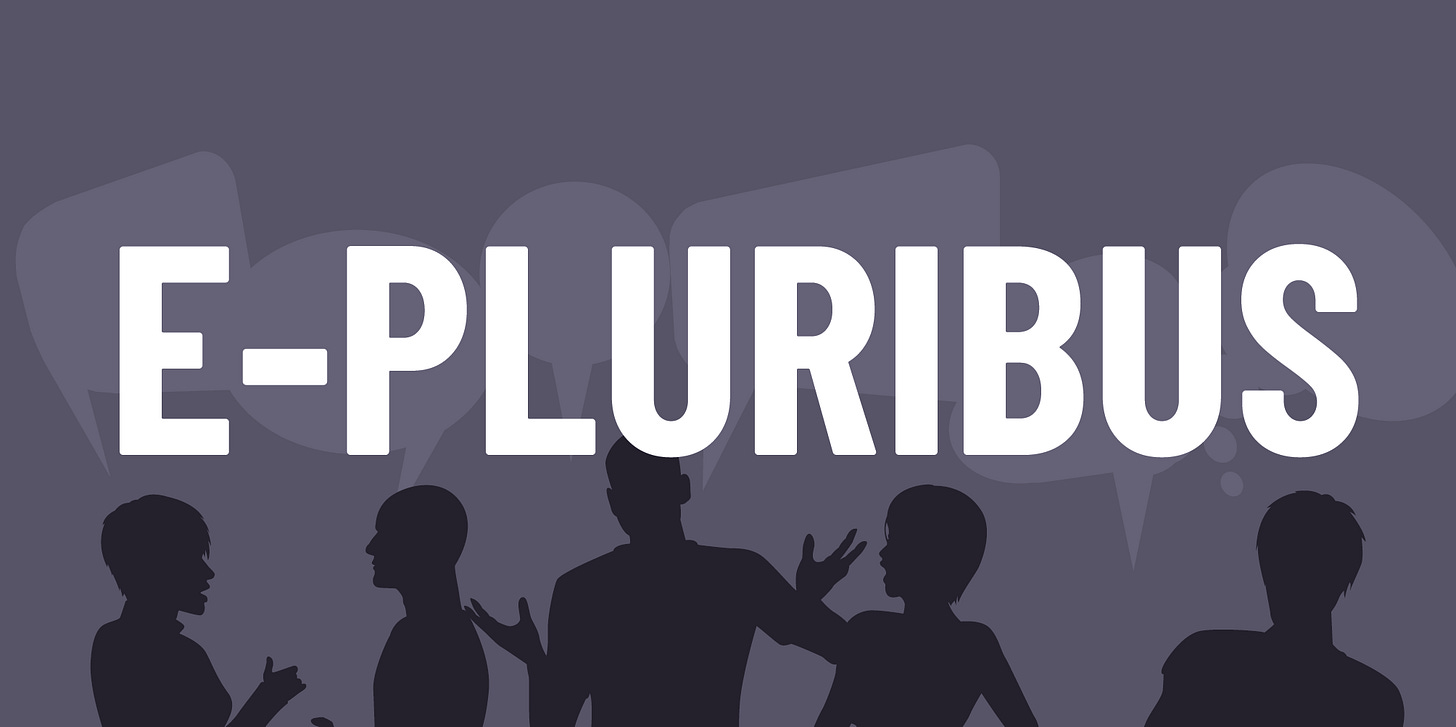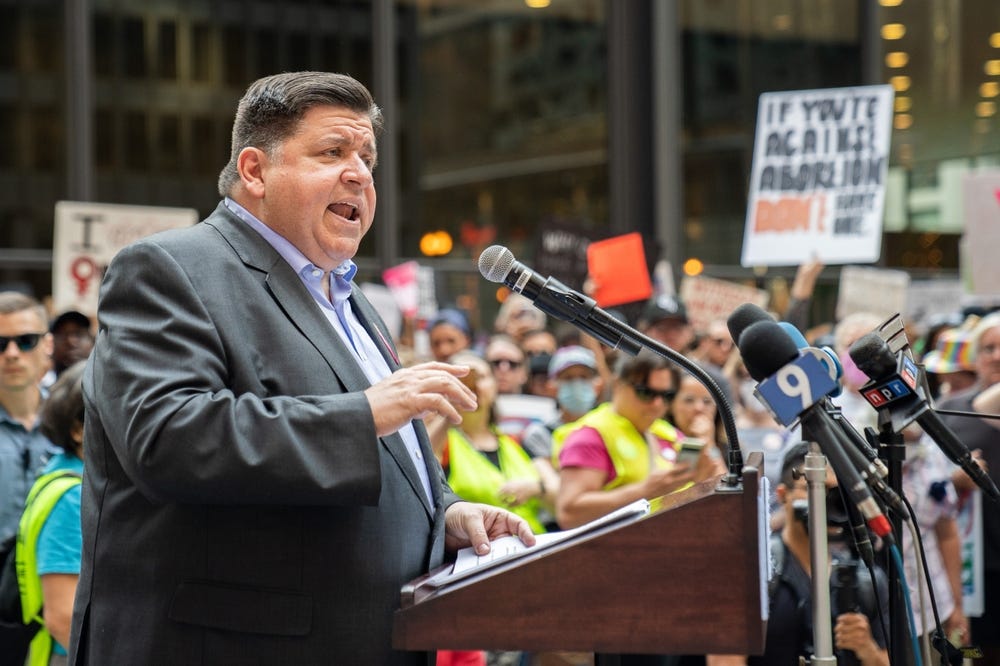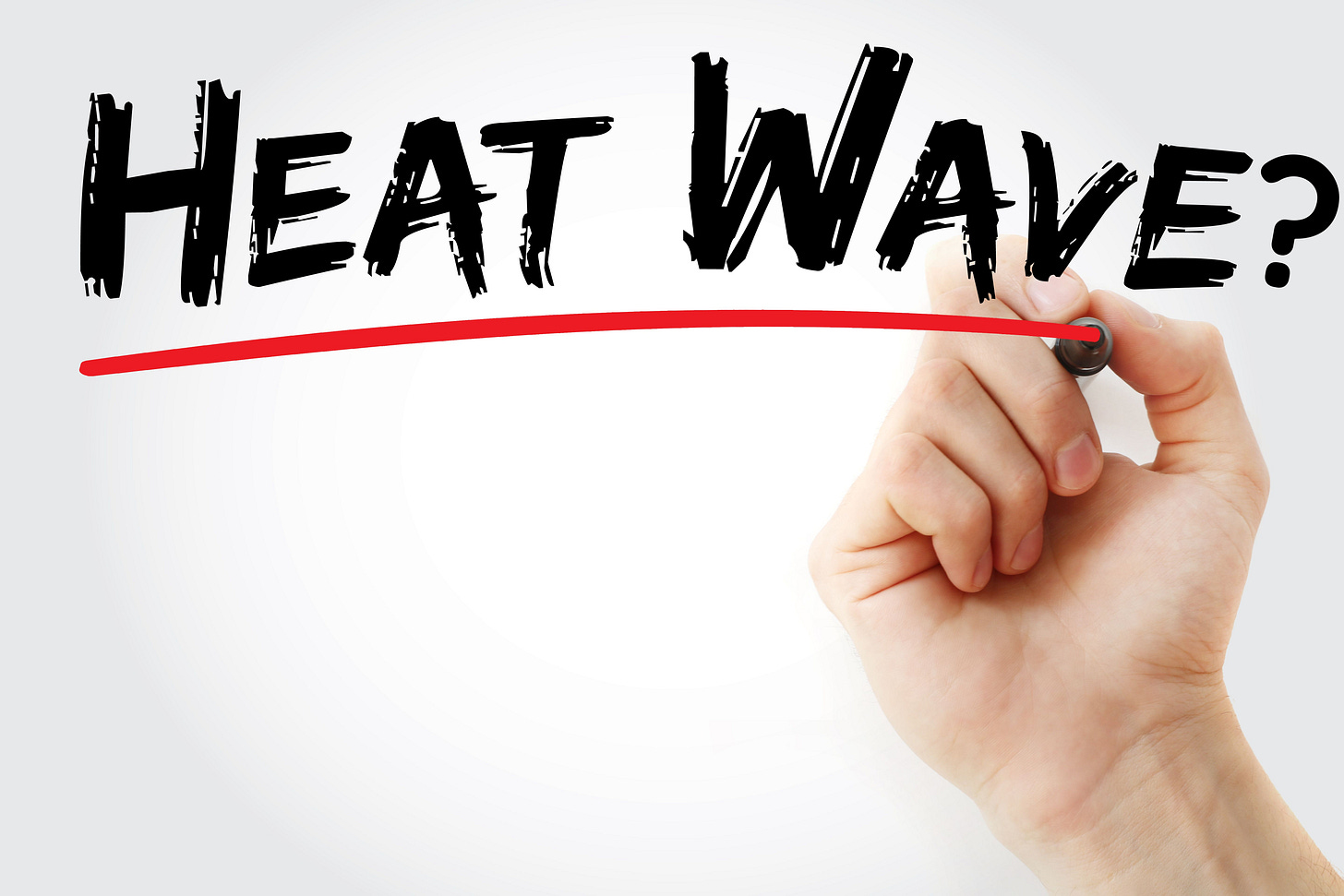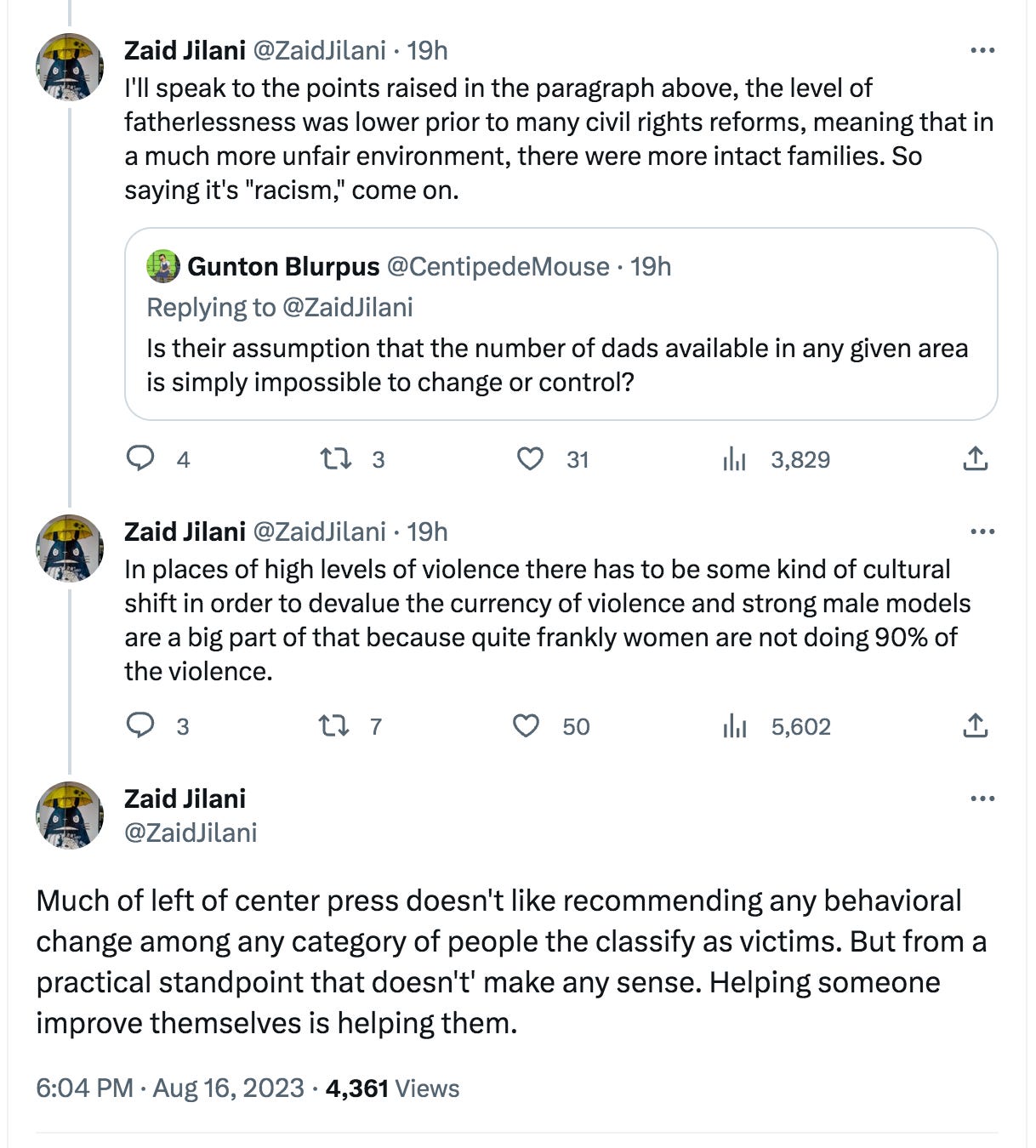E-Pluribus | August 17, 2023
A judge schools a governor on the First Amendment; college presidents get serious about free speech; and exposing the "heat index" to the sunlight.
A round-up of the latest and best writing and musings on the rise of illiberalism in the public discourse:
Wall Street Journal Editorial Board: A Free-Speech Lesson for J.B. Pritzker
The Supreme Court decision striking down Roe v. Wade has opened the door for politicians on both sides of the issue to try to outdo one another. A federal judge in Illinois has issued an injunction, criticizing the state government for attempting to unfairly favor supporters of abortion rights over their pro-life counterparts, the editorial board of the Wall Street Journal points out.
Gov. J.B. Pritzker recently signed a law amending the state’s Consumer Fraud and Deceptive Business Practices Act to sweep in pregnancy centers that counsel women against abortion. The law, drafted by Illinois Attorney General Kwame Raoul, regulates the antiabortion groups on grounds they engage in “deceptive business practices.”
The law “is both stupid and very likely unconstitutional,” federal Judge Iain Johnston wrote in an Aug. 4 order granting a preliminary injunction. “It is stupid because its own supporter admitted it was unneeded” and had no evidence supporting its claims of deception, he wrote. “It is likely unconstitutional because it is a blatant example of government taking the side of whose speech is sanctionable and whose speech is immunized.”
The speech of abortion providers is “specifically excluded from being sanctioned under the Consumer Fraud Act,” Judge Johnston wrote. Regulating pregnancy centers for deceptive practices while exempting abortion providers is viewpoint discrimination. In Reed v. Town of Gilbert (2015), the Supreme Court held that laws regulating speech based on content are “presumptively unconstitutional” and violate the First Amendment.
[ . . . ]
Messrs. Raoul and Pritzker know that the sidewalk counselors and pregnancy centers aren’t engaged in commercial transactions. Sidewalk counselors are typically volunteers and often from religious organizations. “There is no remuneration of any kind and there is no economic motivation of any kind,” the judge noted in his order.
Read it all here.
Zachary Schermele: College Presidents Are Planning ‘Urgent Action’ to Defend Free Speech
Zachary Schermele at the Chronicle of Higher Education highlights a positive development for free speech in higher education. While high profile cases of speech suppression and censorship get more attention, Schermele writes that at least some college presidents are taking the problem seriously.
[13 college presidents] — hailing from Cornell, Duke, and Rutgers Universities, to name a few — are pledging to “urgently spotlight, uplift, and re-emphasize” free speech and academic freedom over the next academic year, they announced Tuesday. The presidents, who are planning what they call “urgent action,” are mostly from private colleges.
[ . . . ]
The campaign, which the presidents are calling the “Campus Call for Free Expression,” is the most-recent indication of college presidents’ increasingly forceful defense of free-speech principles. It follows other efforts like the Champions of Higher Education, a group of 100 former college presidents coordinated by PEN America, in collaboration with Campus Compact, to advocate for free expression. At the same time, many presidents have become cautious in recent years about tackling hot-button issues for fear of blowback. Others have been notably quiet as state governments have taken heavier hands in matters typically left up to academics.
[ . . . ]
Though free-speech controversies are nothing new in higher ed, recent data were another motivator for the group of campus leaders. The Knight Foundation, which is funding the effort, commissioned a survey in 2022 that found opinions among Americans, including undergraduates, about the importance of the First Amendment differ wildly along political and racial lines. Students were also increasingly in favor of imposing campus restrictions on speech that targets minority groups.
[ . . . ]
Even among the presidents participating in the campaign, though, there is disagreement over why now is the right moment to recommit to academic freedom. Some are concerned about students and faculty members self-censoring. Others, like Michael S. Roth, president of Wesleyan University, are more wary of “right-wing power brokers that are trying to take freedom of expression away from teachers, professors, and libraries.”
Uniting them all, Roth said, is the idea that “you learn by finding ways of having good conversations with people who don’t agree with you. And that’s not so easy these days.”
Read the whole thing.
Nicholas Clairmont: The heat index misinforms readers
It’s no surprise that the media have a flair for the dramatic. Nicholas Clairmont at the Washington Examiner warns, however, that the oft cited “heat index,” billed as the “real” temperature your body feels, is not quite that simple.
“Why the heat index matters more than the temperature in a heat wave,” went a CNN headline in July. Also in July, the New York Times issued an explainer to interpret the new scale and terminology that replaced plain old temperature: “What Is the Heat Index, and Why Does It Matter?” Now, temperature is out, and, “experts say, it’s the heat index that should draw more concern.” Last week, the Washington Post ran the headline “Hot-tub-like Persian Gulf fuels 158-degree heat index in Iran.”
Temperature itself is a complicated thing. To get boring and scientific about it, temperature measures the average kinetic energy of teeny molecules, which, even in a solid substance, are still moving about at the subatomic level. But, of course, there are different ways to measure it. Americans tend to use Fahrenheit, everyone else around the world tends to use Celsius, and scientists tend to use Kelvin, which sets zero to “absolute zero,” a physical constant that refers to the point when those molecules aren’t moving. But the main thing we actually do with temperature is wonder what it’s like outside. And for that purpose, we’re getting some strange new scales recently.
Much like “wind chill” is a bad thing to include in winter weather reports, “heat index” is a misleading measure that isn’t related to our intuitions of how hot it is outside. Strictly speaking, the “heat index” is not new. Writer Tom Scocca (whose work I recommend in general) wrote about it at Gawker in 2013, back before making fun of the weather reports was something that would get liberal bloggers called right-wing climate deniers, in a post called “The ‘heat index’ measures how stupid you are.”
As it factors in humidity and direct sunlight, the heat index regularly produces numbers that sound crazily high, but only because readers are comparing them to the straight temperature, non-heat index figures they’re used to. Put it this way: At 96 degrees Fahrenheit and 65% humidity, a weather combination that sucks but is something any resident of Washington, D.C., also calls “a summer day,” the “heat index” is a searing-sounding 121 degrees. Washington summer is hot, and it must have been hard for the government to function for the 102 years between the 1790 Residence Act and the invention of air conditioning by Willis Haviland Carrier in 1902. But the district is also not Death Valley.
Read it all.
Around Twitter
Here’s a Zaid Jilani thread on the impact of parental involvement on crime:
Via Michael Shellenberger, who is in charge of what constitutes “misinformation”? According to YouTube, WHO, that’s who:
And finally, the euphemizing of biological sex continues apace:











Thanks for reminding me, I need to call my egg producer!